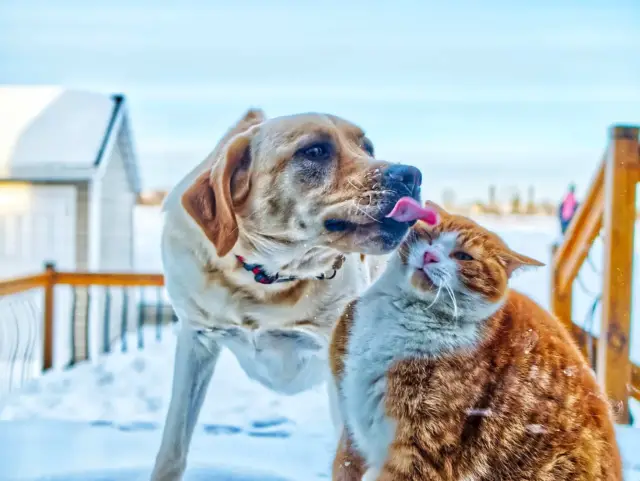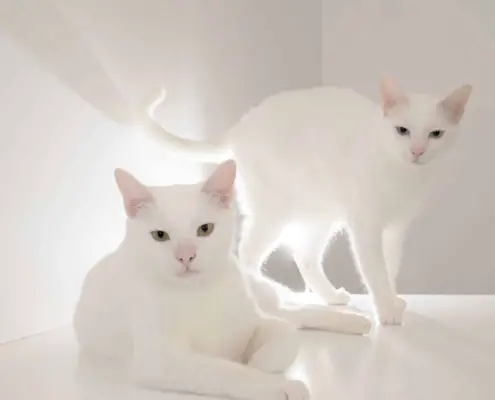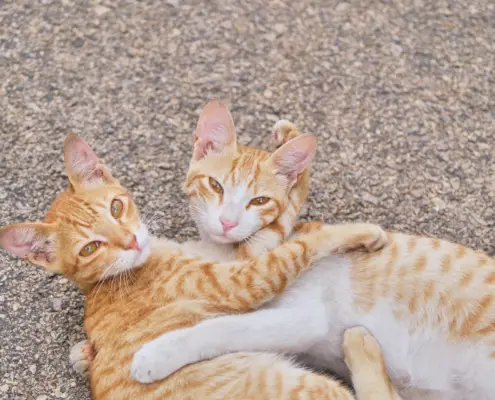
Introducing a new cat to a resident dog, or vice versa, can be a delicate process. Taking the time to properly introduce your cat and dog is crucial for their safety and well-being. A rushed or poorly executed introduction can lead to stress, anxiety, and even aggression between the two animals. By following the steps outlined in this guide, you can ensure a smooth and successful introduction.
Preparing your home for the introduction
Before bringing your new cat or dog home, it’s important to prepare your home for their arrival. This includes creating separate spaces for each pet, such as a designated room or area where they can retreat to when they need some alone time. This will help them feel secure and reduce the chances of any territorial behavior. Additionally, make sure to remove any hazards or items that could potentially cause harm to either pet.
Creating a safe and comfortable space for your cat and dog
Once you have set up separate spaces for your cat and dog, it’s time to make them feel comfortable in their respective areas. Provide each pet with their own food and water bowls, litter box (if applicable), and comfortable bedding. It’s also a good idea to provide plenty of toys and scratching posts for both pets to keep them mentally stimulated. By creating a positive environment for each pet, you are setting the stage for a successful introduction.
Gradual scent introduction
One of the first steps in introducing your cat and dog is to familiarize them with each other’s scents. Start by swapping bedding or toys between the two animals, allowing them to become accustomed to the scent of the other. This can be done by placing a blanket or towel that has been used by one pet into the other pet’s area. Additionally, you can rub a cloth on one pet and then place it near the other pet’s sleeping area. Gradually increasing exposure to each other’s scents will help them become more comfortable with the idea of sharing their space.
Controlled visual introduction
After a few days of scent introduction, you can move on to a controlled visual introduction. This can be done by using a baby gate or a pet barrier to separate the two animals while allowing them to see each other. Start with short periods of visual contact, gradually increasing the duration over time. Observe their reactions and body language during these sessions. If either pet shows signs of aggression or stress, such as hissing, growling, or lunging, it’s important to separate them immediately and seek professional advice if necessary.
Supervised face-to-face introduction
Once both pets have become comfortable with each other’s scents and have shown positive reactions during the visual introductions, it’s time to proceed with a supervised face-to-face introduction. Choose a neutral location, such as a room where neither pet spends a lot of time, and keep the initial meeting short. Make sure to have treats and toys on hand to distract and reward both pets for calm behavior. During this stage, closely monitor their interactions and be prepared to intervene if necessary. Gradually increase the duration of these supervised sessions as the pets become more comfortable with each other.
Signs of a successful introduction
A successful introduction between your cat and dog is characterized by calm and relaxed behavior from both pets. They may show curiosity towards each other, sniffing and investigating without any signs of aggression. Positive body language, such as relaxed ears, tail wagging (for dogs), and slow blinking (for cats), indicates that the introduction is going well. Keep in mind that it may take some time for them to fully accept each other, so be patient and continue to provide a safe and positive environment.
Dealing with challenges and setbacks
Introducing a cat and dog can sometimes come with challenges and setbacks. If you encounter any issues during the introduction process, such as persistent aggression or fear from either pet, it’s important to address them promptly. Seek professional guidance from a veterinarian or animal behaviorist who can provide you with tailored advice and techniques to help overcome these challenges. Remember, every pet is unique, and what works for one may not work for another.
Additional tips for a successful introduction
Gradually increase the amount of time the cat and dog spend together, always under supervision.- Provide plenty of positive reinforcement, treats, and praise when the pets display calm and friendly behavior towards each other.- Allow each pet to have their own separate spaces and resources to avoid any potential conflicts.- Consider using pheromone diffusers or sprays, such as Feliway for cats or Adaptil for dogs, to help create a calming environment.- Consult with your veterinarian about the possibility of using medication or natural supplements to reduce stress or anxiety in either pet.
Conclusion
Introducing a cat to a dog, or vice versa, requires patience, time, and careful planning. By following the steps outlined in this guide, you can ensure a safe and successful introduction between your pets. Remember to take things slowly, observe their behavior, and seek professional advice if needed. With proper introductions and ongoing monitoring, your cat and dog can form a harmonious and loving relationship.
If you enjoyed my article, I would appreciate you sharing it with your network.

Sima Ndlebe
Sima writes for CatBuzz. He is interested in Cats, Health and Fitness, and Entrepreneurship.
Published: 30 October 2023



